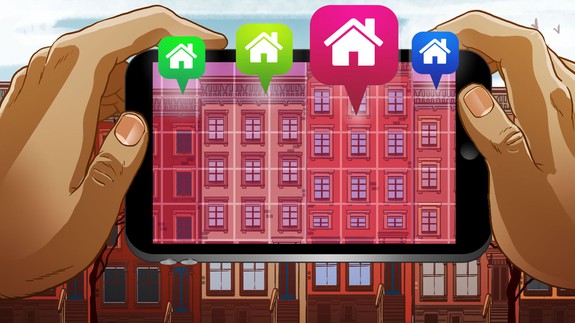Get ready for augmented reality *everything*
The hottest thing in Silicon Valley is coming soon to … well, pretty much everything.
Augmented reality is shaping up to be the next big digital gold rush, and consumers should ready themselves for the onslaught. Apple’s doing it. So are Google and Snapchat. Oh, and as we saw recently, Facebook is as well.
AR has thoroughly trounced virtual reality in the battle for developers’ hearts and minds, and with the amount of money behind the technology, it’s only a matter of time before even the Luddites of the world are forced to grapple with it in some form or another.
SEE ALSO: Facebook’s top VR researcher explains why augmented reality is the future Read more…More about Smartphones, Virtual Reality, Augmented Reality, Ar, and Apple
…

The hottest thing in Silicon Valley is coming soon to … well, pretty much everything.
Augmented reality is shaping up to be the next big digital gold rush, and consumers should ready themselves for the onslaught. Apple’s doing it. So are Google and Snapchat. Oh, and as we saw recently, Facebook is as well.
AR has thoroughly trounced virtual reality in the battle for developers’ hearts and minds, and with the amount of money behind the technology, it’s only a matter of time before even the Luddites of the world are forced to grapple with it in some form or another.
So what is AR, and why is it so special? For starters, unlike virtual reality which walls the user off from the real world, augmented reality applies a digital and interactive layer to the real world. That layer can be dropped on basically anything, anywhere. And it soon will be.
Augmented reality requires a combination of hardware and software to function, and likely one day AR-specific products similar to Google Glass will be commonplace. At present, people mostly interact with augmented reality through their smartphones, but that will change as companies like Facebook move to develop AR glasses.
Even now, in its early form, AR is a powerful tool. The explosively popular Pokémon GO, which Apple says was the most downloaded app in its app store over the course of 2016, is one example of augmented reality taking over the gaming space. Snapchat’s filters, which overlay playful images on video, represent another instance of incredibly popular AR being used daily.
While hundreds of millions of people are already using AR, what we’ve seen is only the beginning.
In 2015, a team of artists and developers created an augmented reality art walk in Long Beach, California. Participants could stroll around the city and spot murals only visible through the AR app on their phone.
“We are now in a transition toward the next internet, the Heads Up Internet,” developer Bryan Amburgey told the Long Beach Post at the time, “where instead of looking down into a device we will be looking through a device to experience the internet all around us.”
Mark Zuckerberg must have gotten Amburgey’s message, as the Facebook CEO announced at the company’s 2017 F8 conference that his team is pushing hard into AR and had even created an augmented reality mural themselves.
Art is just the start. In a 2016 speech picked up by 9to5Mac, Apple CEO Tim Cook predicted just how vital the technology will be to everyday life. He explained that “a significant portion of the population of developed countries, and eventually all countries, will have AR experiences every day, almost like eating three meals a day.”
That’s right, interacting with AR will soon be as common as eating.
[embedded content]
Cook’s claim may be hyperbolic, but maybe not. Many people today view their smartphones as a crucial extension of themselves — allowing them to engage with the world in new and profound ways — and using augmented reality apps could soon feel the same way.
And there is money to be made. Global market research and consulting firm MarketsandMarkets predicts that the global AR market will hit $117.40 billion by 2022. Companies like Google and Facebook, which primarily earn revenue off advertising, likely see the forthcoming AR wave as opening up entire new ad frontiers.
Instead of overlaying art on walls or objects, like Amburgey chose to do, companies can drop ads on everyday objects. Want to access the AR directions left by a friend? Pull out your phone, turn on your app, and follow the arrows pointing to your buddy’s favorite sandwich shop — just don’t get distracted by the digital popup ads littering the sidewalk.
Predicting the future is notoriously difficult, but if Cook is correct and AR does become an integral part of our lives you can except brands and companies will all want a piece of that pie (some already do).
So get used to seeing people gaze through their phones at the hidden digital universe surrounding them, because augmented reality is here, and before too long it will be everywhere else too.